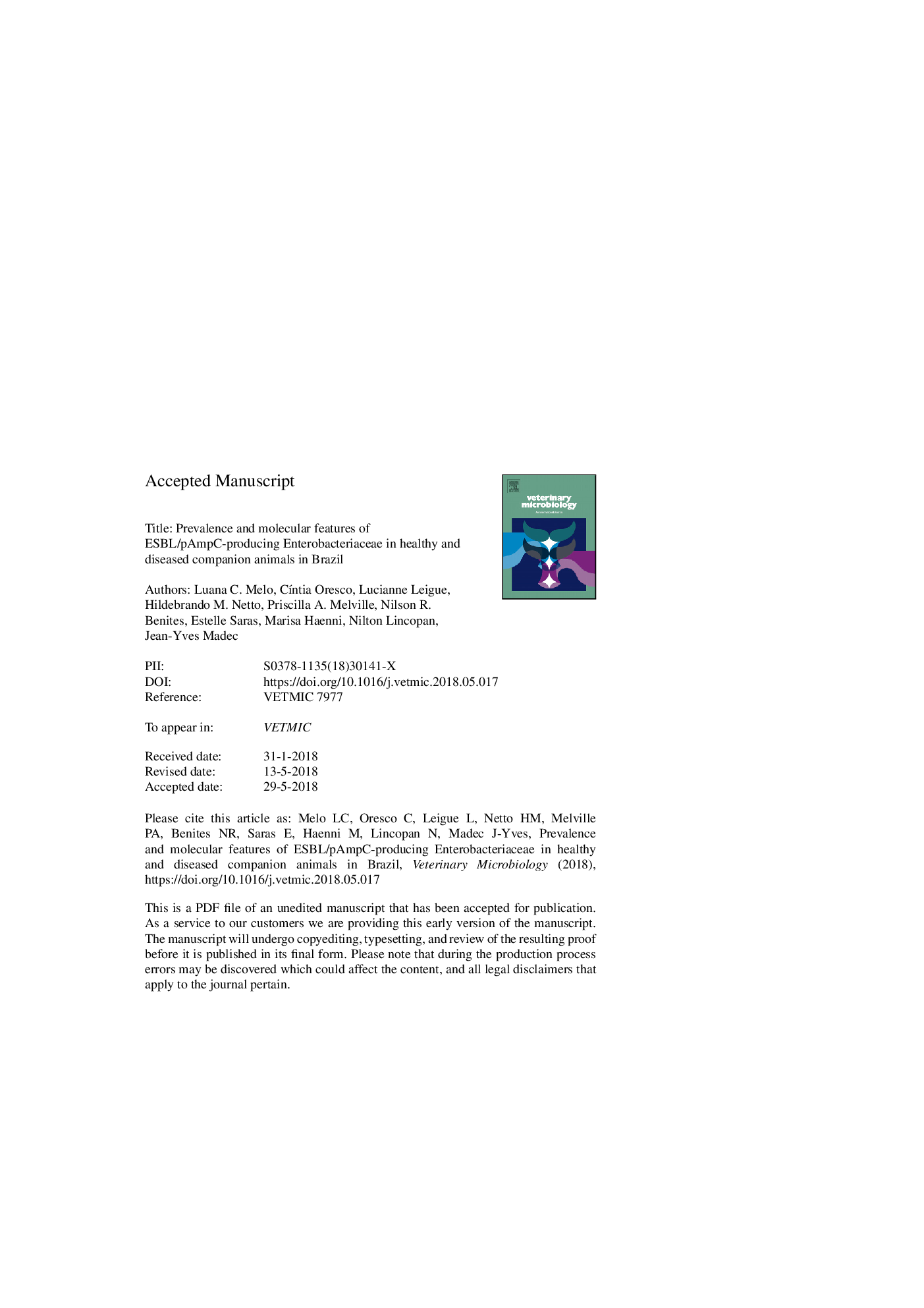| Article ID | Journal | Published Year | Pages | File Type |
|---|---|---|---|---|
| 8505211 | Veterinary Microbiology | 2018 | 24 Pages |
Abstract
Extended-spectrum beta-lactamase (ESBL)- and plasmid-mediated AmpC (pAmpC)-carrying Enterobacteriaceae have widely disseminated in human, animal and environmental reservoirs. Pets have been recognized as a source of ESBL/pAmpC worldwide, and are possibly also a source of human contamination. The aim of this study was to document to what extent cats and dogs may act as a driving force in the spread of ESBLs and pAmpCs in Brazil. A total of 113 healthy stray cats and dogs and 74 sick pets were sampled, and extended-spectrum cephalosporin-resistant Enterobacteriaceae (ESC-R) were detected in 28/113 (24.8%) and 8/74 (10.8%) tested animals, respectively. Different Enterobacteriaceae isolates (mostly E. coli), a large number of E. coli clones (with ST90, ST457, ST973 and ST2541 being predominant), and several ESBL/pAmpC genes and plasmids were characterized, highlighting the ability of stray and pet cats and dogs to further spread a wide range of ESC-resistance determinants. The ESBL phenotype was due to the blaCTX-M-2 and blaCTX-M-8 genes, as found in human epidemiology in Brazil, but blaCTX-M-9 and blaCTX-M-15 were also identified. The pAmpC phenotype was systematically due to the presence of the blaCMY-2 gene, mostly carried by IncI1 ST12 plasmids. Our results showed that pets can be considered a significant reservoir of multidrug-resistant bacteria in Brazil. This is especially true for healthy stray dogs that displayed the highest prevalence (24.8%) of ESBLs/pAmpC resistance determinants, which can then be further spread both to the environment and to other animals or humans by contact.
Related Topics
Life Sciences
Agricultural and Biological Sciences
Animal Science and Zoology
Authors
Luana C. Melo, CÃntia Oresco, Lucianne Leigue, Hildebrando M. Netto, Priscilla A. Melville, Nilson R. Benites, Estelle Saras, Marisa Haenni, Nilton Lincopan, Jean-Yves Madec,
